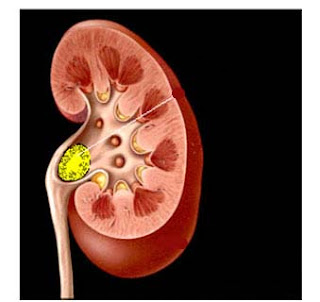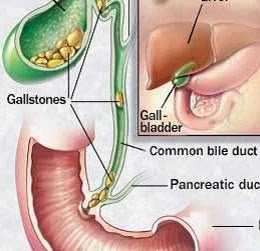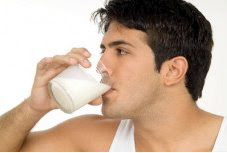
It’s unlikely that you'll experience symptoms or see signs of having developed a kidney stone unless the kidney stone is large enough to cause a blockage, is passing or is responsible for a urinary tract infection.
If you’ve developed a kidney stone (renal lithiasis) that’s large enough to fall into the latter category, you may find yourself suffering from a sudden onset of a severe cramping pain in your lower back—below the edge of your ribcage, your groin, side, or abdomen. This pain is often so severe that it is not unheard of for it to be accompanied by nausea or vomiting and be further characterized by the fact that changing your body position will fail to relieve it. All four types of kidney stones (calcium, struvite, uric acid and cystine) may also cause blood to appear in your urine. If a urinary tract infection develops as a result of a stone, you may also experience a fever and chills.
However, any number of medical conditions other than kidney stones can cause symptoms similar to those listed above. So, your doctor or urologist will need to ask you a few questions to determine the precise nature of your pain and get a picture of your lifestyle. Your doctor will also need to perform a physical exam and may order X-rays or other imaging tests to get a better look at your kidneys or urinary tract.
If it turns out that you’ve developed more than one kidney stone or if you have a family history of kidney stones, additional testing may be called for. To find out which type of kidney stone you’ve developed--calcium, struvite, cystine, etc., your doctor may order blood tests and or ask that you collect your urine for a 24-hour period. Both tests will help your doctor determine the chance you’ll develop stones in the future.
Source: parkaveurology.com


















